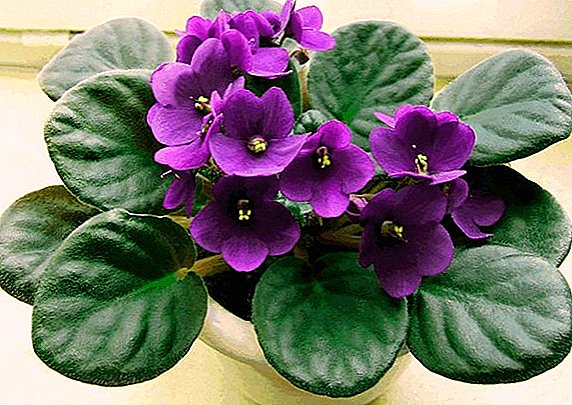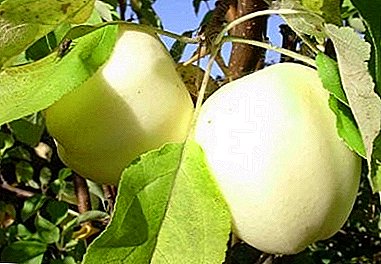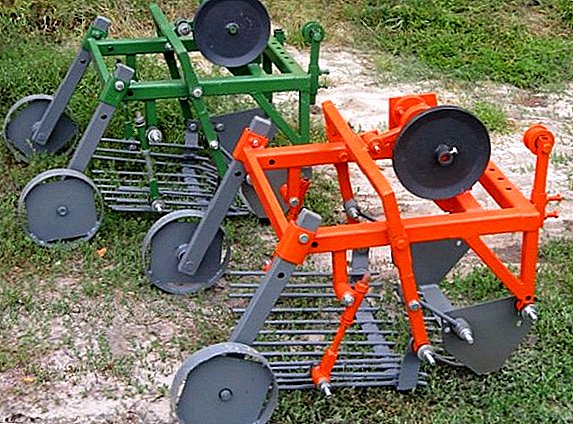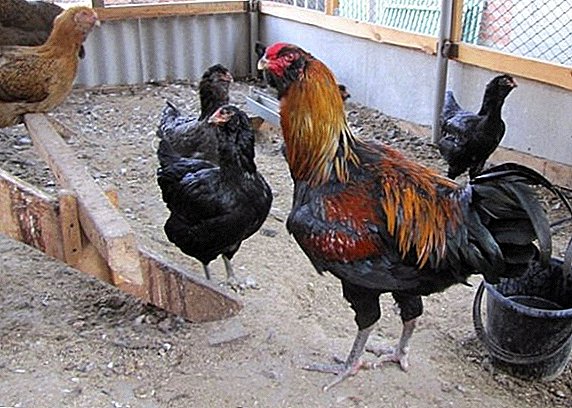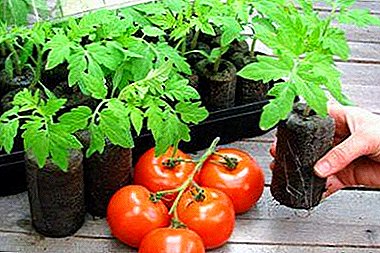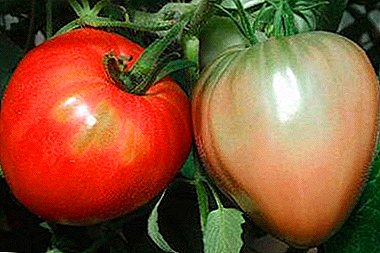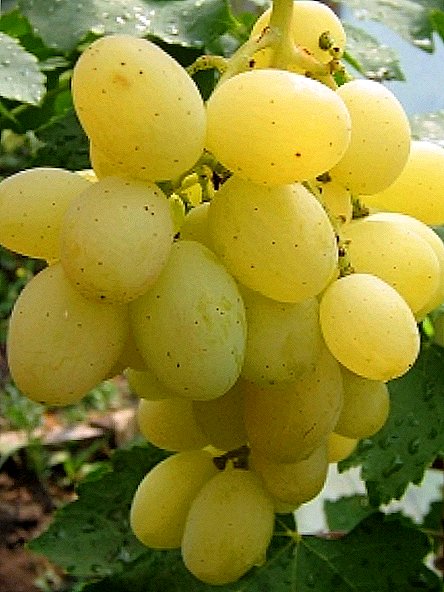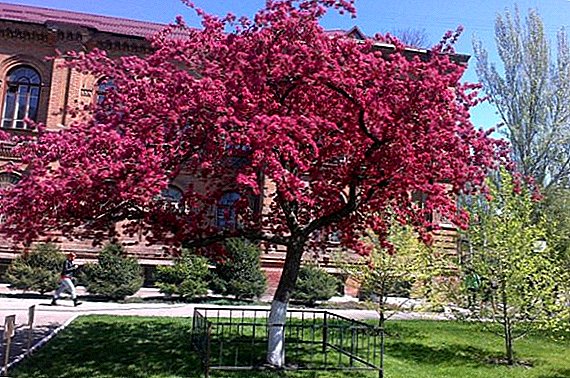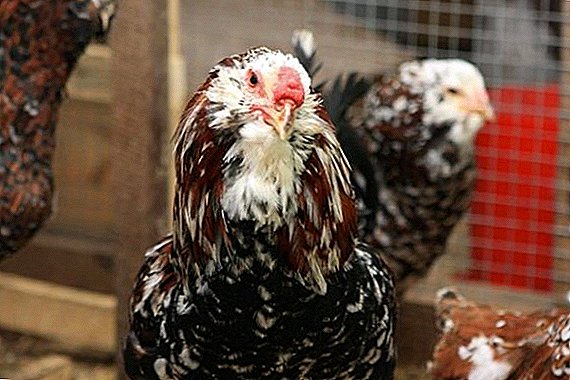 The old universal chicken breed of Russia is Orlovskaya, which was good in the production of meat, eggs and showed its natural fighting and decorative qualities of birds. In this article, we consider the description and peculiarities of the content of orlovkov in the household.
The old universal chicken breed of Russia is Orlovskaya, which was good in the production of meat, eggs and showed its natural fighting and decorative qualities of birds. In this article, we consider the description and peculiarities of the content of orlovkov in the household.
About breeding
Count Orlov-Chesmensky (a favorite of Catherine II) became famous not only for the breeding of beautiful Orlov horses. The hens brought out by him were also named after the count. Events count more than two centuries.
The formation of the breed was attended by the Malaysian fighting and Persian birds, characterized by a strong character, colorful feathers and bearded species. Through the efforts of the graph, this breed became widespread in the 19th century practically throughout the entire European territory of the state. The Russian Imperial Poultry Farmers Society announced the standard parameters of the Orlov bird in 1914.
We recommend to get acquainted with the best representatives of meat, egg and ornamental breeds of chickens.
 Outside Russia in the states of Europe, the popular bird has received the name Russian. But in the middle of the XX century it disappeared, as it was massively exterminated during the Second World War. In addition, fashion trends in the poultry industry have changed in the direction of imported hens, aimed at industrial production of eggs and meat. For a long time, the Oryol breed was on the verge of complete extinction. In the postwar years, Russian breeders began to restore the endangered breed. Now it looks in accordance with pre-revolutionary standards after 40 years of laborious work of scientists.
Outside Russia in the states of Europe, the popular bird has received the name Russian. But in the middle of the XX century it disappeared, as it was massively exterminated during the Second World War. In addition, fashion trends in the poultry industry have changed in the direction of imported hens, aimed at industrial production of eggs and meat. For a long time, the Oryol breed was on the verge of complete extinction. In the postwar years, Russian breeders began to restore the endangered breed. Now it looks in accordance with pre-revolutionary standards after 40 years of laborious work of scientists.
The All-Russian Research and Technological Institute of Poultry keeps the breed in the collection as a genetic stock (reserve).
Description and features
Bred in the XIX century, the breed meets the requirements of its time. Cold winters and wet weather are endured by birds. Egg production practically does not fall, which is important when the eggs are more expensive during the winter period. And the meat is endowed with a pleasant unconventional taste. Representatives of the breed are unpretentious to the conditions of existence and food feed. But chickens are sensitive to cold and bad weather, as they slowly grow and fledge. They require special attention and approach.
Did you know? Chickens have the ability to recognize spoiled eggs. Often they throw them out of the nest.

Find out what to do if chickens are badly born and how birds can get sick.
Appearance and physique
Roosters have such features:
- torso elevated, slender, vertical direction;
- legs are elongated, hardy, yellow without plumage;
- the neck is long with a bend;
- skull with a wide flat occipital bone and overhanging brow ridges;
- chest slightly arched;
- beak short, curved, yellow (type of predator);
- the plumage of the neck and the neck forms a lush layer;
- crest small, crimson, with inconspicuous tubercles;
- the tail of medium length is directed upwards and consists of beautiful feathers;
- eyes are reddish-amber deep set;
- earlobes and earrings are red small, hidden under the beard and tanks.
Color
Only after two years do the representatives of the breed become fully developed and captivate with true beauty. The color of the eagles varies widely. Black and white are monochromatic in color. The scarlet individuals are endowed with a red-brown head and a black back, body and chest. The most popular color is calico.  Red-black-and-white patches are found throughout the plumage of these birds. There is the following bird color:
Red-black-and-white patches are found throughout the plumage of these birds. There is the following bird color:
- Scarlet (red, hazelnut) brown;
- scarlet (red, hazelnut) black-breasted;
- white;
- clay (yellow);
- mahogany brown-breasted;
- mahogany black-breasted;
- striped;
- spotted red and white;
- calico (red-black and white);
- black
Character
Orlovka hens are distinguished by their peaceful, balanced character. Roosters are aggressive and do not miss the opportunity to show strength and fighting qualities. Interestingly, the breed also attracts outstanding appearance and beauty. 
Important! Excessively feeding with mash beans entails plucked beards, as the birds peck up the remnants of food along with feathers from fellows.
Hatching instinct
It is not possible to make a hen of them, since the instinct of hatching eggs is completely absent. And an incubator is required for breeding.
Productive qualities
Meat-egg productivity of the breed lies mainly in the production of meat, as egg production is significantly lower than meat indicators.
Familiarize yourself with the features of breeding meat breeds of chickens: Poltava, Brama, Foxy chik, Kuchinsky Jubilee, Cochinquin.
Egg production and when they begin to rush
Growth of young stock goes slowly. Oryol hens give the first eggs at 7-8 months of age. Their number on average reaches 145 pieces per year. The second year is characterized by a drop in egg production rates. Egg weighs 58-60 g, the shell is painted in white and light cream colors. Chickens of calico-colored shells give a pale pink color. Orlovka is not suitable for the production of eggs on an industrial scale.
Did you know? Light is an important condition for egg laying. The chicken will not fly in the dark, it will wait until the day comes or the lights come on.

Learn how to improve chicken production in the winter.
Precocity and taste of meat
Early breed representatives reach the age of two. The weight of the rooster reaches 4-4.5 kg, chicken - 3 kg. The meat of the Oryol bird is endowed with a pleasant taste of game, although it is a bit harsh. Differs in a small amount of internal fat, which is so typical for wild birds. So breeders emphasized the external and internal similarities with wild relatives successfully.
Conditions of detention
The best place to keep the Oryol breed will be a separate room, as the fighting cocks will not tolerate neighborhood with other birds. In the absence of any other coop, birds are divided by partitions, placed in cages or placed in distant enclosures. Compulsory elements of any place of detention will be the roost, nest for laying eggs, feeders, drinkers and place of walking.
To purchase the best chicken coop for your birds, check out its selection. You can build a house for chickens with your own hands.
Requirements for the room
The size of the chicken coop depends on the veterinary norms, where the indicator of 4-5 animals per 1 square meter is set. m When kept in cages, the creation of all the conditions necessary for the bird is taken into account. Straw, sawdust, peat chips serve as bedding on the floor of the chicken coop. In winter, sawdust is put in a thick layer for additional insulation.  In the spring they are cleaned and burned, and the walls are disinfected with lime or an antiseptic. Nests and perches have not less than one meter from the floor and closer to the far wall of the room. In winter, the temperature should not fall below +12 ° C, and in summer - rise above +25 ° C. Nests are made of wooden boxes, baskets, bedding material is placed on the bottom.
In the spring they are cleaned and burned, and the walls are disinfected with lime or an antiseptic. Nests and perches have not less than one meter from the floor and closer to the far wall of the room. In winter, the temperature should not fall below +12 ° C, and in summer - rise above +25 ° C. Nests are made of wooden boxes, baskets, bedding material is placed on the bottom.
Courtyard for walking
The bird needs a spacious walking, a small aviary will not suit her. Sun baths and fresh air provide young people with vitamin D and ensure normal growth.
How to endure the cold
Birds of the Oryol breed are not afraid of cold weather, since they were bred for middle latitudes. Wintering them will help warming the coop and the elimination of drafts. Additional heating is needed only where the frost reaches minus 30 ° C. Lamps in metal lampshades and heaters eradicate the problem.
What to feed
The curved short beak is taken into account when purchasing feeders and drinkers. The bird should easily take food and drink water. Do not forget to regularly put in the feeders small pebbles, sand. Chickens require improved nutrition and special attention, as they are prone to colds, curvature of the beak, weak legs.
Chickens
 The presented scheme correctly organizes the feed ration of chickens:
The presented scheme correctly organizes the feed ration of chickens:
- 1-5 days - chopped boiled egg or cottage cheese with cornmeal or boiled millet;
- 5-10th day - wet mash on the back. The basis of the mash is special feed, wheat bran, chopped greens, boiled carrots;
- from the 1st to the 10th day feeding is carried out 6-7 times per day;
- from the 10th to the 30th day - 4-5 times;
- from the 30th day - 3 times.
Adult chickens
Adult representatives are undemanding to the diet and will eat any part of the feed. But for a satisfactory development and improving the immunity of the breed requires a balanced, high-quality nutrition. The menu includes:
- grain mixtures (wheat and barley (30% each), buckwheat (5-10%), millet and seeds (10%), corn (10%));
- compound feeds;
- bran;
- vegetables (carrots, beets, potatoes, cabbage);
- cut grass, nettle (in summer).
Important! Feed orlovtsev only grain is not permissible.
 Breed likes mash on broth from meat or skimming, the approximate composition of which includes boiled potatoes, steamed barley with meat and bone meal and fish waste. Chalk and vitamin-mineral supplements are required to be present in the diet daily. yay
Breed likes mash on broth from meat or skimming, the approximate composition of which includes boiled potatoes, steamed barley with meat and bone meal and fish waste. Chalk and vitamin-mineral supplements are required to be present in the diet daily. yayAdvantages and disadvantages
Let us briefly emphasize the advantages and disadvantages of the Oryol breed.
Advantages:
- decorative, extraordinary appearance;
- high viability;
- meat productivity due to large body mass;
- Exquisite taste of meat product.
- late maturation of layers;
- nursing difficulty and poor chick survival;
- low egg production;
- requirements for a balanced diet.
Reviews



